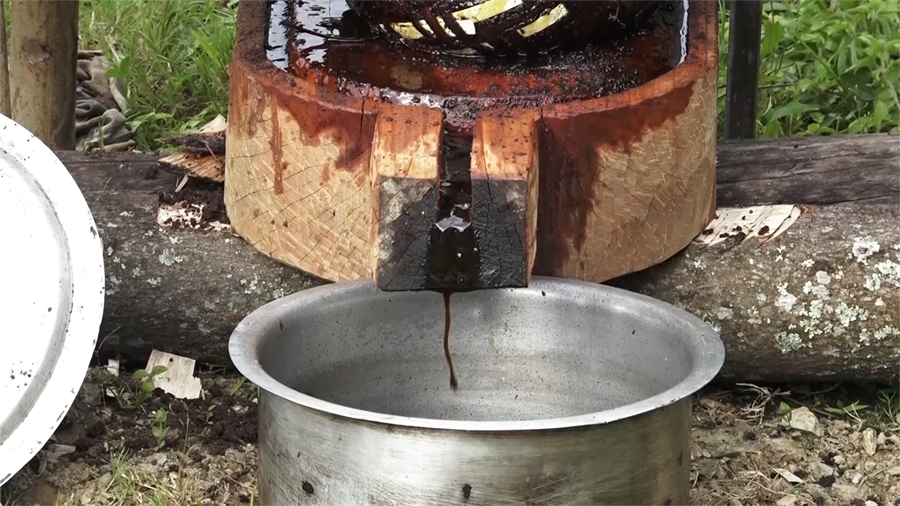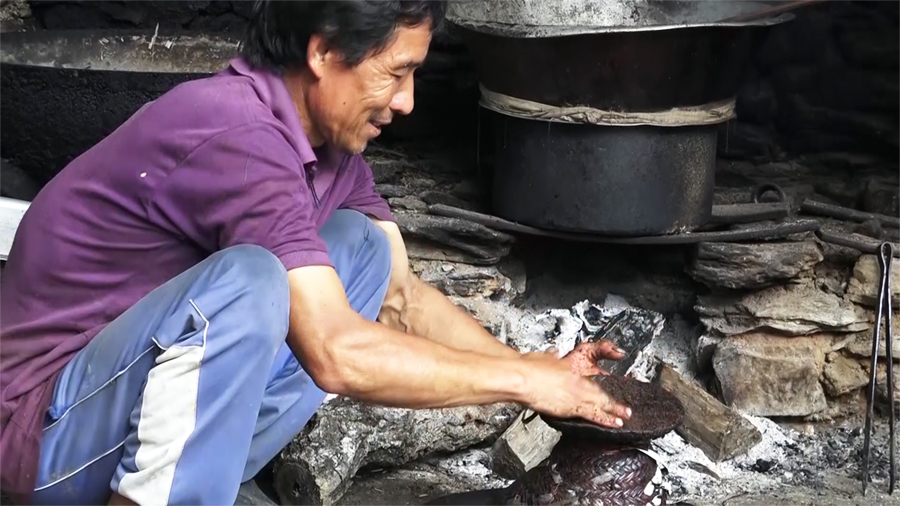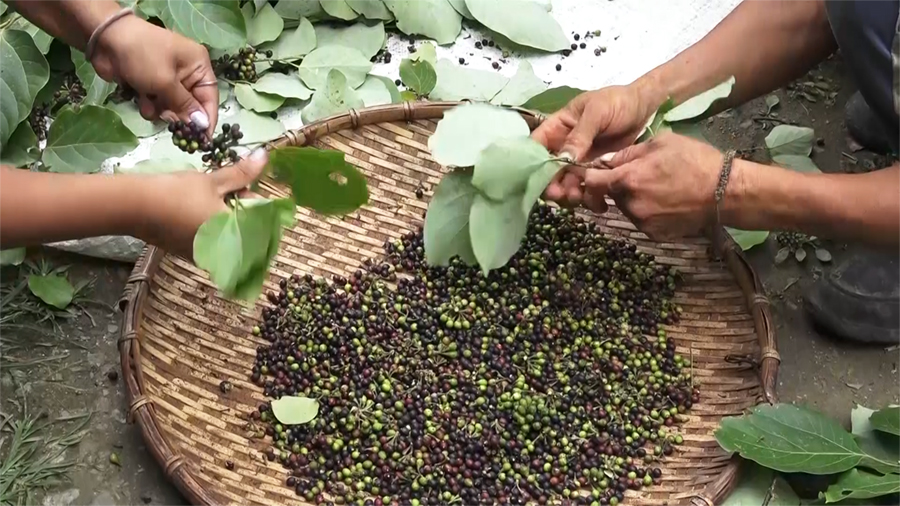
Elderly parents commonly use natural food items that can be harvested from the forest. Shingse, a natural oil extracted from the parasassafras confertiflora, locally known as Selung shing seed, is one of these items. These natural and organic products are gradually disappearing due to rapid development and changes. However, one household in Shumar Gewog has kept this tradition alive even today.
Parasassafras confertiflora tree is found in some areas of Pema Gatshel district. Its fruit is often undervalued and goes to waste.
 However, for Thuktob Phuntsho, it is a source of income as he collects the fruit to produce oil.
However, for Thuktob Phuntsho, it is a source of income as he collects the fruit to produce oil.
He gathers fallen branches and collects the twigs with seeds, then takes them home. The seeds are dried for a month or longer before being ground into powder.
According to Thuktob, very few people follow this process now, as imported edible oils are cheaper.
“In the past, we did not have access to the edible oils available today. As a result, people used shingse and mustard oil, with a preference for shingse over mustard oil. I am returning to this practice, realising that many old traditions are changing.”
 The dried seeds are beaten until they turn into a fine powder. Instead of using the powder directly, it is filtered with a bamboo sieve and then steamed for more than an hour. Once the powder is ready, it can be moulded.
The dried seeds are beaten until they turn into a fine powder. Instead of using the powder directly, it is filtered with a bamboo sieve and then steamed for more than an hour. Once the powder is ready, it can be moulded.
Thuktob Phuntsho said that “everyone says this oil is good when they see it. It is used during rituals, and even religious practitioners consider it very precious. It is also essential for making ritual cakes.”
Thuktob had stopped oil processing for a few years due to its difficulty but resumed during the COVID-19 pandemic, anticipating potential future challenges.
“Since many people have expressed interest in buying the oil, I believe it is better to continue this work. If I do not face any obstacles, I plan to collect more seeds and increase production in the future. I am even considering cultivating the trees on our registered land.”
The price of the oil is like that of butter, and farmers used to produce 10 to 20 kilogrammes a season. According to locals, the oil is highly nutritious and is widely used for both human and cattle health.
Thinley Dorji, Pema Gatshel
Edited by Sherub Dorji







